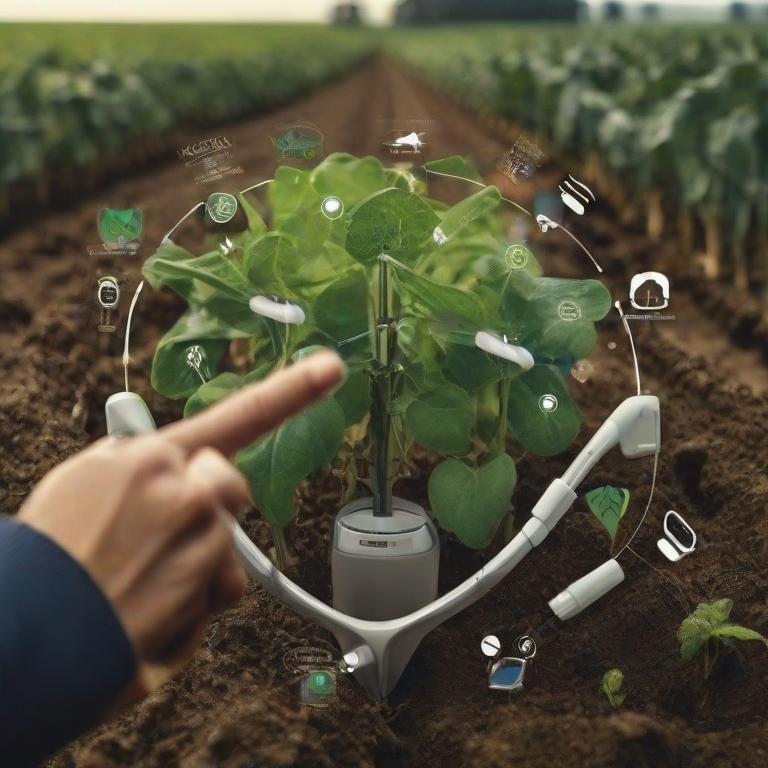Smart farming, often referred to as precision agriculture, leverages the Internet of Things (IoT) to enhance various aspects of farming operations. IoT devices, such as sensors, actuators, and other connected devices, collect data from the field and enable farmers to make more informed decisions. Here’s how IoT is being utilized in agriculture:
- Soil Monitoring:
- IoT sensors placed in the soil can measure moisture levels, nutrient content, and temperature. This real-time data helps farmers optimize irrigation, fertilization, and overall soil health management.
- Crop Monitoring:
- Sensors attached to crops can monitor growth rates, detect diseases, and assess overall plant health. This information aids in early detection of issues, allowing farmers to take corrective actions promptly.
- Weather Stations:
- IoT-connected weather stations provide accurate, localized weather data. This information assists farmers in planning their activities, such as planting and harvesting, based on current and forecasted weather conditions.
- Livestock Monitoring:
- IoT devices like smart collars or ear tags for livestock enable farmers to track the health, location, and behavior of animals. This data helps in optimizing feeding schedules, detecting signs of illness, and improving overall animal welfare.
- Automated Equipment and Machinery:
- Farm machinery equipped with IoT devices can be remotely monitored and controlled. This includes tractors, harvesters, and irrigation systems. Farmers can schedule tasks, track equipment performance, and receive alerts for maintenance needs.
- Drone Technology:
- Drones in smart farming are often IoT-enabled, collecting data on crop health, field conditions, and pest infestations. The information gathered is then analyzed to make data-driven decisions.
- Supply Chain Optimization:
- IoT devices help track and monitor the entire agricultural supply chain. From monitoring storage conditions to tracking the transportation of crops, IoT ensures that the quality of the produce is maintained throughout the supply chain.
- Data Analytics and Decision Support Systems:
- The data collected by IoT devices is often integrated into advanced analytics platforms. Machine learning algorithms can analyze this data to provide actionable insights, helping farmers make better decisions on planting, harvesting, resource allocation, and more.
- Resource Management:
- IoT enables precision in resource management by monitoring and optimizing the use of water, fertilizers, and pesticides. This not only increases efficiency but also contributes to sustainable farming practices.
- Mobile Applications and Farm Management Platforms:
- Farmers can access real-time data and analytics through mobile applications and online platforms. These tools provide a user-friendly interface for monitoring farm activities and making informed decisions.
By integrating IoT technologies into agriculture, farmers can optimize resource use, reduce waste, and improve overall productivity. The ability to collect and analyze data in real-time empowers farmers to make timely and informed decisions, ultimately contributing to more sustainable and efficient farming practices.

